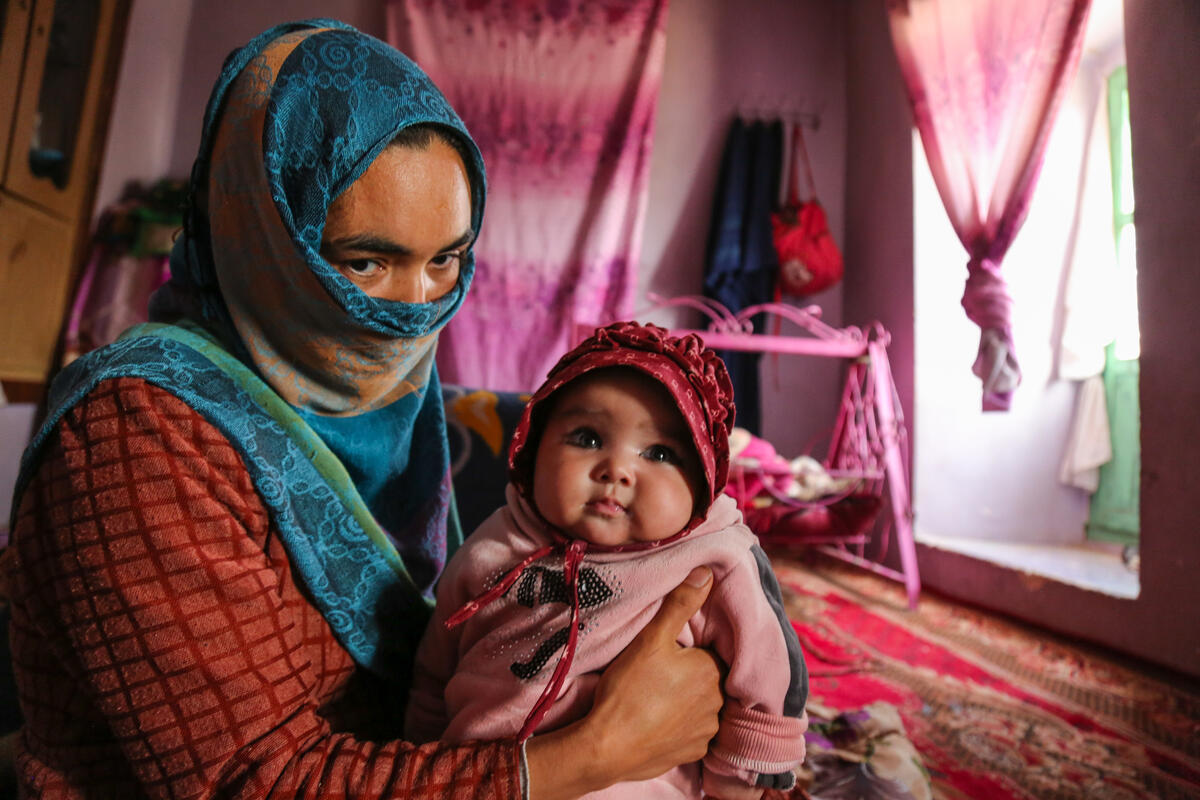2022年1月11日
Two-thirds of Afghan children need help to survive in 2022
Number of children in desperate need of aid surges by 3.4 million in the past year
Zabi*, 29, with one of her 3-month-old twin daughters, Afghanistan.
Two in three – or more than 13 million – children in Afghanistan are in desperate need of life-saving aid, according to new UN figures. That’s an increase of more than a third since the start of 2021 as the country descends into one of the world’s worst humanitarian crises.
Save the Children is calling for the international community to step up and allocate funding to meet the US$4.4 billion target required in the 2022 Humanitarian Response Plan to help children survive the freezing winter and challenging year ahead.
Zabi*, 29, lives with her mother, father and her three children. Two months ago, her husband died from diabetes while travelling to Iran, leaving them without a source of income. The family is struggling without enough money for food and Zabi’*s children chew bits of paper or rubble they find on the ground to suppress their hunger. Save the Children has provided the family with a cash transfer so that Zabi* could get fuel for heating and food to feed the family. Zabi* said:
“When my husband was alive, he brought everything, from food to clothes. It is winter now, and I have no warm clothes for my children. We have no money, we have nothing. We do not have any fuel to warm the house. I hear my children cry at night because of the cold, they can’t sleep it’s so cold and we have no food to eat and no place to live that is our own. Once we receive the money [from Save the Children] we’ll buy milk and other things. It will be enough for one month and after that, we will face the same problems.”
Save the Children’s acting Country Director in Afghanistan, Fiona McSheehy, said: “The level of human suffering in Afghanistan has eclipsed that of any other humanitarian crisis in the world. The numbers are almost impossible to comprehend: Almost the entire country is expected to plunge into poverty, and more than half the population is facing critical levels of hunger.
“But the numbers only tell part of the story. To know the true extent of this crisis, you need to see the painfully thin children being brought to our clinics with severe malnutrition, the desperate mothers going days without food so their starving children can eat, the families surviving for weeks on nothing but bread, huddling under blankets to keep warm because they can’t afford firewood. And this isn’t just the worst-off families – almost the entire population is now in a struggle to survive.”
The new figures published by the UN reveal that 24.4 million people – more than half the country’s population – are in need of aid in 2022. An estimated 13.1 million of them are children, up from 9.7 million at the start of 2021.
In another stark sign of the escalating crisis, the number of young children facing malnutrition has increased by 700,000, from 3.2 million to 3.9 million. One million are heading for severe acute malnutrition, which is life-threatening without treatment.
Save the Children is distributing cash to 4,800 households during the first two weeks of January to ensure families can buy critical food to get them through winter. Thousands of sets of clothes, blankets and other winter items are also being distributed. And in the coming months, cash will be given to more than 20,000 families so they can buy a heater and a three-month supply of wood, or a gas stove and gas for three months to help them cook.
*Name changed to protect identity


